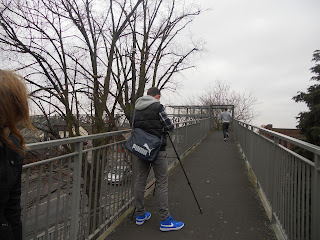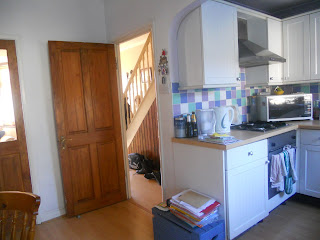Friday 23 March 2012
Thursday 22 March 2012
Individual Response to the Groups Choices
I was a very dibaitable member of the group, believing my ideas should be heard.
i initionally came up with the ideas of the film name Enough is Enough, the characters, scenes and locations to the storyline, but as a whole we all decided to bring it into life.
I wasn't fond of some edit styles such as the Shock Media, but we had a group vote and i lost, so i had to comprimise.
However i am pleased with the group how we gelled together to bring the film to life.
i initionally came up with the ideas of the film name Enough is Enough, the characters, scenes and locations to the storyline, but as a whole we all decided to bring it into life.
I wasn't fond of some edit styles such as the Shock Media, but we had a group vote and i lost, so i had to comprimise.
However i am pleased with the group how we gelled together to bring the film to life.
Editing Screenshots and Analysis
The first screenshot is of us deciding on fonts for the credits and of us adding the credits to our opening sequence. We chose this font as it looks like handwriting, which refers to our main character writing the letter and illustrating her innocence.
This is a screenshot of our final timeline. You can see all the different shots and editing techniques we have used, including our fades which establish a flashback or a change of day.
This is a screenshot of us splitting a shot which was too long and that we only needed a short part of. This is a shot of the brother (James) walking into Mary's bedroom after she has rushed into the house after a really tough day, and we chose to split this sequence of video as we only needed a little part of it.
Over the course of the last few weeks, we have learned how to use Final Cut Express and also different attributes to it. Such as the use of different video transitions (for example fade in, fade out etc) and also learning the basics of editing and keep it continuous.
This is a screenshot of our final timeline. You can see all the different shots and editing techniques we have used, including our fades which establish a flashback or a change of day.
This is a screenshot of us splitting a shot which was too long and that we only needed a short part of. This is a shot of the brother (James) walking into Mary's bedroom after she has rushed into the house after a really tough day, and we chose to split this sequence of video as we only needed a little part of it.
Over the course of the last few weeks, we have learned how to use Final Cut Express and also different attributes to it. Such as the use of different video transitions (for example fade in, fade out etc) and also learning the basics of editing and keep it continuous.
Location Shots
These are the bridges that we considered for our opening sequence. The first bridge was a good location because it's very quiet place which would make it easier to film and from a characters prespective no-one would suspect her attempt to commit suicide. However, the bridge was too high and therefore the audience wouldn't be able to tell excactly what is happening. The second location was a lot easier to film as it was over a railway and it put across a dangerous feel bcause it was also next to a busy road.
Preparation for filming
Shots
· Viewing Suicide Bridge as long and extreme long.
· Tormented teenage girl in room writing suicide note as POV, over the shoulder, medium, close and extreme close up.
· Flash-back as white, then flash-forward as black
· In the flash-back have all variety of shots from long to extreme close ups.
Shooting Schedule
· Record flash-back at Coombe Sixth Form as the teenage girl is getting bullied.
· As the girl is writing her note, that will be filmed in Josie’s house and bedroom.
· Then after, as girl is threatening to commit suicide and where her sibling finds her, on the bridge in Motspur Park.
Props/Costumes
· The bullied teenage girl, wearing nerdy clothes, glasses, a tonne of books with her.
· Bullies being cool and wearing the fashion of 2012.
· Notepad and pen.
· Sibling wearing casual clothing.
· Winter wear for January time.
Location
· Coombe Sixth Form
· Loving/casual household
· Sweet bedroom
· Damp and grey Bridge.
Dialogue/Script
As a top class student faces the troubles of being bullied constantly at her secondary school, she is hitting the point of where she cannot go on. She feels like she cannot go on anymore as her friends have left her; this boy she idolises rejects her and life she isn’t going to get any better.
Therefore she has resulted in an attempt of suicide, writing a note, flooding tears telling her family and friends that it’s too much to take and the support isn’t there. She feels lonely and wants to end all. As her sibling finds the note, he/she is worried and desperate to track her down. Will he/she find her, only one way to find out in Enough is Enough…
Initial storyboard idea for film opening.
This is our initial storyboard. We talked about our individual ideas for the project and then we put them all together into this storyboard, to give us a rough outline to what we are going to put in our opening sequence. We have made some slight changes.
Analysis of Credits & Titles
The Inbetweeners Movie
A stand out credit sequence for me is when films keep rolling the film along with the credits, just half and half of the film and credits.
Analysis of Titles
The Football Factory
This film relates to football hooliganism across Britain, and the start of this movie completely hits the niche market that the producers are attracting.
Analysis of Credits
Tuesday 21 February 2012
Have You Fed The Fish - Preliminary Task
I found the Media preliminary task a joy to make, as my group of Daniel, Danny and Bailey all made a fun and decent film. My role was the main actor where I had to secretly walk to a distinctive room and meet the boss to tell him I ‘fed the fish’ As we made the film by constant takes, we eventually came up with a sequence which we could edit from there on in.
When we got into editing the movie we had to keep cutting and smoothing the video to create a fine clip of film.
I did not really help on the editing side as much as I would liked of, but I wasn’t sure of what to do and was ill for two lessons, therefore next time when my group are making our film, I would like to get involved in the editing side a lot more.
What I enjoyed about the task was at the end, when we watched the clip in `front of the whole class at the end and see them smiling and laughing at our work, showing we have met our target and achieved something. For me i enjoyed every moment making this film and cannot wait to do it again.
Joe Wilson
Saturday 28 January 2012
Children of Men - Opening Sequence
The opening sequence of the film Children of Men starts off with a news report of that the youngest person in the world has died aged 18. It shows the time and location of when we are at in the world (London City 2027) Also there is a sign of the time in 2027 where London has shown to be evolved by animated adverts and improved taxis.
Massive crowd disappointed with death of youngest person, as Diego has become an iconic and popular figure across the world, therefore this has affected the entire public. A turquoise cafe has been set up in at the start of the film, suggesting that the area and the time of life is very relaxed and calm, but as soon as this tragic news has come in to the world, it has produced massive sadness and grey across the world.
The video in the cafe the television looks like a projector, suggesting a new way of visual life and a change in the world has happened.
A sound bridge is used over the course of when the main character leaves the cafe and then the camera tracks him through the pavement seeing what is going to happen, then a tense sound starts to come on as non-deigetic creating an unusual atmosphere, seeming something is going to happen.
As soon as you know it the camera pans round to the other side of the main character and an explosion happens before title comes up with Children of Men, leaving the film on an edgy cliff-hanger.
Camera/audience focuses on one man who bought the coffee; this is because he is the only character in the film that doesn’t really focus on the television and the youngest person being killed, all he cares about is picking up his coffee and walking off.
All in all it was an edgy opening clip of Children of Men but achieves its target of keeping the viewer drawn in the movie and wanting for more.
Tuesday 10 January 2012
Phantom of the Opera - Lighting and Colour
The colour changes significantly throughout the extract of the Phantom of the Opera. Black and White colouring is portrayed throughout the first section of the clip, representing the Phantom of the Opera is one of the classics, with the use of Black and White representing classic, old, antique and worthy, all these meanings all link with fortunate and wealthy, which is another aspect of Phantom of the Opera is looked at. As the chandelier unveiled on the screen, the set turns into its original colour, representing that the chandelier is at the scene of everything, that it can transform classic black and white into the modern day colours, showing that it has a powerful meaning. The main colours in production are red and gold, used in the costumes and settings signifying wealth, luxury, romance and passion. These colours and representations suggest that this play is all linked to luxury and love, producing a mysterious dilemma on which one will come on top.
The lighting suggests a key participant in the first half of the extract; where in black and white colouring is being portrayed using the key and back lighting, suggesting a secretive approach to the start of the clip, where we can only see half of the right side of the characters features. As the Chandelier is unveiled on the screen, it brings bright lights towards the setting and all around the clip, with no shadows appearing. As colour comes into the film, lighting turns into left lighting giving a clearer picture for the audience to view. Back lighting being used towards end of clip again clearing the picture and setting, giving a better picture to view.
Joe Wilson
Subscribe to:
Posts (Atom)


















